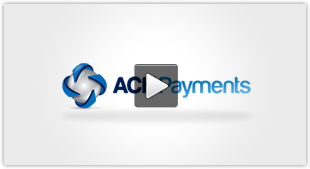ACH Recurring Solutions are financial services that enable consumers and businesses to facilitate scheduled payments through the ACH network. This network is governed by the National Automated Clearing House Association (NACHA), which sets the framework for ACH payments. Recurring ACH transactions offer a reliable way for entities to transfer funds automatically, ensuring timely payments and improved cash flow management.

For businesses, ACH Recurring Solutions offer a secure and cost-effective method to collect from customers on a regular basis. This kind of payment process is beneficial for subscription-based services, utilities, loans, and any scenario where repeated payments are expected. Businesses appreciate the reduced administrative burden and lower transaction fees compared to credit card processing. Meanwhile, consumers enjoy the convenience of not having to manually handle repetitive transactions, as ACH debits take the funds directly from their checking or savings accounts on predetermined dates.
These ACH solutions comply with strong security standards to protect sensitive financial data during transmission and processing. By following NACHA guidelines, service providers ensure that ACH recurring payments are not only efficient and user-friendly but also maintain high levels of security. Consumers and businesses are thus able to engage in recurring financial activities with greater confidence and less exposure to risk compared to other forms of electronic payments.
Understanding ACH and Recurring Payments

ACH Recurring Solutions offer secure, automated transactions for businesses and consumers, facilitating scheduled payments for services like subscriptions, memberships, utilities, and donations.
ACH Fundamentals
The Automated Clearing House (ACH) network is a secure, electronic funds-transfer system, connecting all U.S. financial institutions. It is overseen by the National Automated Clearing House Association (NACHA), ensuring the reliable and efficient movement of money. ACH transactions involve several key players:
- Originating Depository Financial Institution (ODFI) – the sender’s bank.
- Receiving Depository Financial Institution (RDFI) – the recipient’s bank.
- ACH Operators – central clearing facilities (The Clearing House or Federal Reserve) which coordinate the transfer of funds.
ACH transactions can be divided into direct deposits and direct payments, which include both credits and debits.
Recurring Payments Explained
Recurring ACH payments automatically transfer funds between accounts on a prescheduled basis. These transactions support different payment models such as:
- Subscriptions: Regular charges for ongoing services.
- Membership Dues: Periodic fees for belonging to an organization.
- Utilities: Monthly billing for services like electricity or water.
- Donations: Scheduled giving to charities or non-profits.
Businesses benefit from automated payments by receiving funds punctually, reducing billing expenses, and improving cash flow. For consumers, it offers convenience and ensures on-time payments.
Compliance and Regulations
All ACH transactions must comply with NACHA rules and regulations to protect the integrity of the ACH network. Key requirements include:
- Authorization: Businesses must have a customer’s authorization for initiating recurring ACH payments.
- Data Security: Sensitive financial information must be encrypted and stored securely.
- Notification: Customers must be informed about the terms and amounts of their recurring payments.
ACH payment processing requires diligent adherence to such standards to mitigate risks and maintain trust in the ACH system.
Implementing and Optimizing ACH Solutions

Implementing ACH Recurring Solutions aids in streamlining payment processes, ensuring a secure transaction environment, and can spur business growth through cost-effective means.
Setting Up ACH for Your Business
To set up ACH solutions, a business must partner with a merchant service provider that supports ACH payments such as direct deposits and ACH debits. The process generally involves:
- Selecting a provider like Stripe or another payment system that fits the company’s transaction volume and processing time requirements.
- Acquiring approval from the provider to initiate ACH transactions which typically includes a vetting process.
- Integrating the ACH solution with the company’s accounting software to track payments and manage cash flow.
Benefits for Businesses and Customers
ACH Recurring Solutions offer numerous benefits, including the following:
- Cost-Effective: Lower transaction fees compared to wire transfers and credit card payments.
- Security: Implementation of stringent security measures to protect against fraud.
- Cash Flow Management: Predictable payment schedules improve business cash flow.
- Customer Retention: Provides convenience, fostering customer loyalty and recurrent transactions.
Managing Your ACH Transactions
Effective management of ACH transactions ensures security and financial stability. Key considerations include:
- Sufficient Funds: Businesses must ensure accounts have enough funds to avoid failed transactions.
- Cancellation and Chargebacks: Understand the protocol for transaction cancellation to reduce chargeback occurrences.
- Support: Establishing a reliable support system with the financial institution or payment processor is vital for handling transaction disputes and queries.
By focusing on these key facets, businesses can effectively implement and optimize ACH solutions for improved payment processing, thereby driving growth and enhancing the reliability of cash transactions.








